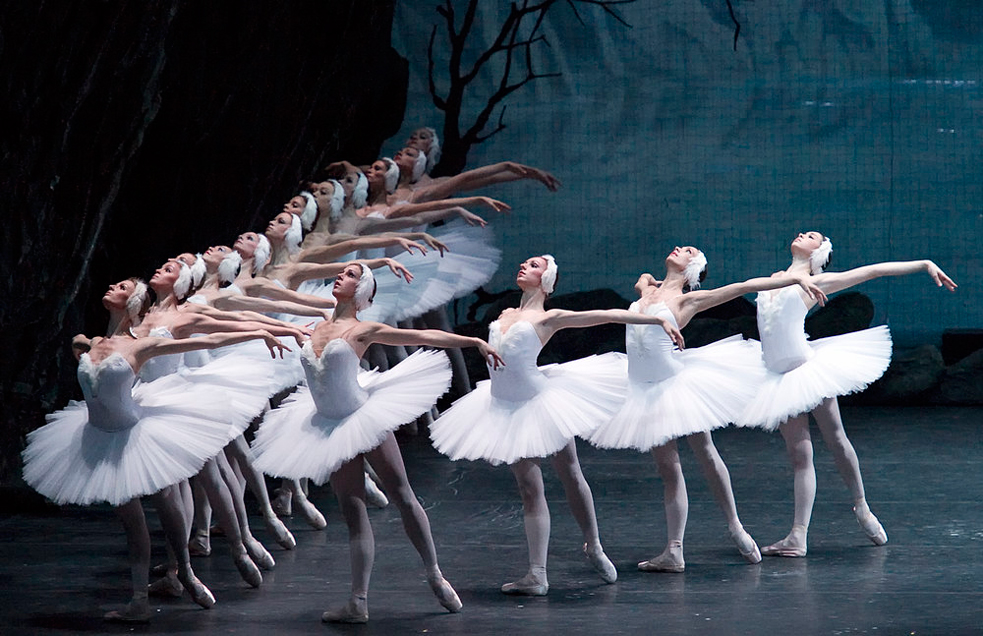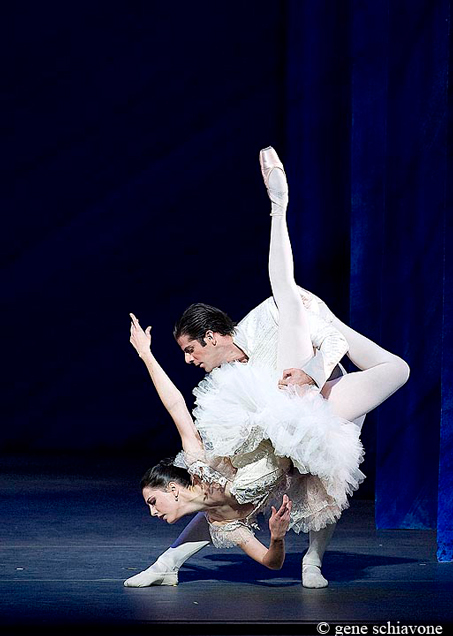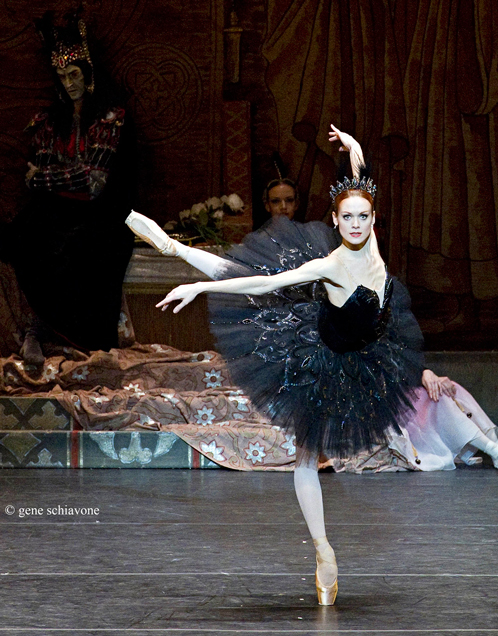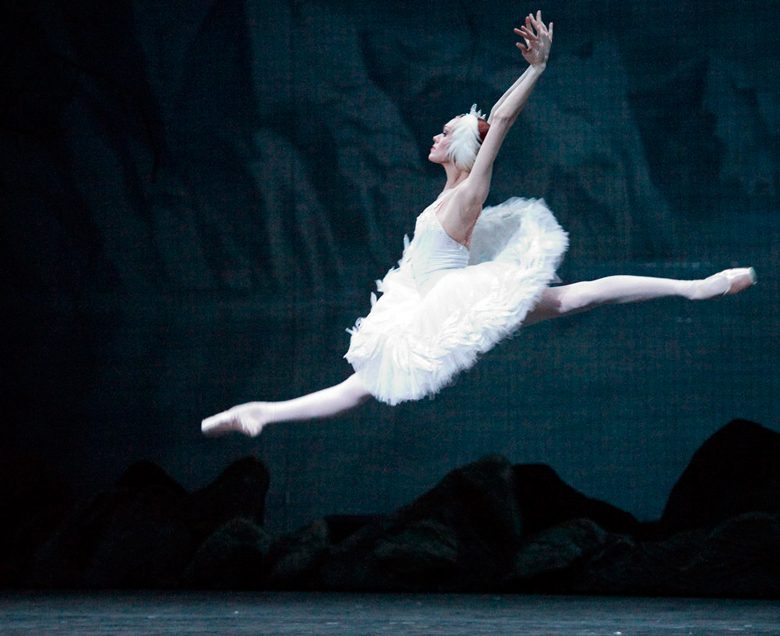Article Originally Published in Spectacle
Sometimes you need to be in the right place at the right time and need to know the right person. For Gene Schiavone, the person he knew was his wife Ellen. The right place was his home and the right time was a fundraiser event his wife had organised.
Mrs Schiavone had been a volunteer with the American Ballet Theatre (ABT) for years and she had a fundraiser at the Schiavone house, during which Gene Schiavone took photos he sent in to the press department of the ABT. Eventually, he retired from his corporate job and he would travel with the ABT Studio Company for two years and learn the trade of dance photography. After these two years, he got a shot at being the photographer for the main company. And the rest is history, as they say.
Mr Schiavone has been an acclaimed dance photographer for over 20 years and is the staff photographer for the American Ballet Theatre, his work has been published in every major newspaper and he has captured pretty much every dancer and ensemble out there.
We approached Mr Schiavone and he was gracious enough to answer some questions on who his unsung heroes of ballet are, who he wished he could capture and why Swan Lake has a special place in his heart.
Spectacle: What is important to you, when you take photos of dancers? What do you try to capture?
Gene Schiavone: There are two important elements in all my work, one is technical, the other is aesthetic. With regard to stage work, my first job is to document the performance from a historical perspective, to create an archival record. I recently photographed Misty Copeland’s debut of “Giselle” and it was important for ABT to have a record of the performance. The goal was, out of 900 images, to tell the story of the ballet in a series of 15-20 photos. In “Giselle” it’s the bench scene where she’s plucking the daisy, the confrontation between Albrecht and Hilarion, the mad scene and Giselle’s death etc. Each ballet has their own “photo points” which tells the story and you must capture. The technical aspects are very challenging due to severe lighting conditions which are usually low light and sometimes almost no light. There is always a balance between blur and grain. Fortunately, the new professional digital cameras allow you to get results that just weren’t possible ten years ago.

“The key to a successful photo is to bring out the emotion within the dancer.”
Spectacle: Why is it important to have background knowledge of the ballet?
Gene Schiavone: I began with no knowledge of ballet. My introduction to the art was through my wife Ellen who was for many years involved with ABT as a volunteer, fundraiser and later as a Trustee. It took a long time and the rejection of hundreds of photos before I began to learn what was proper and what was not. The key is to anticipate the movement and that’s done by listening to the music and watching the feet. Each movement has only one correct moment to be captured
so timing is critical. By taking a rapid series of photos, you’ll most likely miss the right moment.
Spectacle: You have photographed so many dancers and ballet, is there one you haven’t captured but wish you had? An event? A dancer?
Gene Schiavone: I am fortunate to have had the opportunity to photograph some of today’s most noted ballet dancers but I have always wanted to photograph Sylvie Guillem on stage. Tall ballerinas have such striking lines and she is an exceptional artist. Hopefully, there will be a possibility in the future.
Spectacle: Just like the dancers, you have to be on point when you take your photos since the moment goes by so quickly. Did you ever miss an important moment? And how do you make sure you won’t?
Gene Schiavone: After many years I have finally come to the realisation that “you can’t get every shot”. For me, the greatest challenge is the opening of Act II in “Swan Lake”
when Odette enters from stage left, takes two steps into a grand jete. To me, it’s the most important shot of the ballet and the timing is critical, she must be captured at full extension. There is almost no light and she is white against a dark background so exposure is very critical. It’s taken a long time and many missed shots to perfect this. For photo enthusiasts, my camera settings are 360sec, F2.8, 16,000 ISO, -1 exp comp.

“I have finally come to the realisation that you can’t get every shot”
Spectacle: You mentioned before that Swan Lake is your favourite ballet to capture, what is so special about it?
Gene Schiavone: As in act II of “Giselle” act II in “Swan Lake” is difficult so it really tests my skill, it’s very emotional, and has beautiful movement accompanied by wonderful music. I much prefer the traditional story ballets with their classic movement.
Spectacle: I’m sure you have taken thousands of photos, are there ones you treasure the most?
Gene Schiavone: My archives contain over 900,000 photos from the major ballet companies both here and abroad. Since I’ve been an ABT Staff Photographer since 2004, much of my work has centred around them. However, I am fortunate to have worked regularly with Bolshoi Ballet, Mariinsky Theatre, Boston Ballet as well as many other dance companies such as The Radio City Rockettes. I’ve developed many personal relationships with dancers over the years and I suppose those photos are most important. I am a little saddened to think that most of my photos will go unseen. In a typical performance, I may shoot 1,000 images. After a second edit, there may only be 50 left which are ultimately approved for public use. That means 450 of the unchosen will sit on my hard drives and never be seen. Most of those photos are of the corps de ballet as approved photos are usually of principals and soloists. These are the true unsung heroes of a ballet. I always shoot “the girls in the back row”, the dancers that do show after show with little recognition. To me, these are nameless dedicated dancers around which every ballet is built, yet they are rarely acknowledged for their dedication to the art form. In the years to come, their names may not be remembered but they will be kept alive in my photos. A photograph is a moment in time which immediately becomes the past, I see my responsibility as preserving those moments.

“I am a little saddened to think that most of my photos will go unseen”
Spectacle: Can you enjoy ballet without a camera? Do you go to the ballet when you are not working?
Gene Schiavone: I sometimes attend the ballet with my wife and often find it to be a different performance. When I photograph, I’m only looking at a small part of the stage usually centered around the principals. However when in the audience, I often see things I hadn’t noticed looking through the viewfinder. I also see ballets in “clicks” that shot and that shot and that shot. I get very restless sitting there thinking I could be preserving these images.
Spectacle: Ballet is often perceived as something elitist and with social media and smartphones, it might be harder to excite a younger audience. How can ballet reach these audiences to be performers and/or patrons?
Gene Schiavone: Attracting a younger audience has always been a challenge for ballet. Every company I’ve worked with recognises the problem and tries to encourage that segment of the market by special events geared specifically to them along with discounted student tickets and special access.
Many are meeting the challenge through social media. Facebook, Instagram and simulcasting performances have brought ballet to a much wider audience. I actually have noticed more young people at performances in recent years.
Thank you to Gene Schiavone for taking the time to answer our questions.


